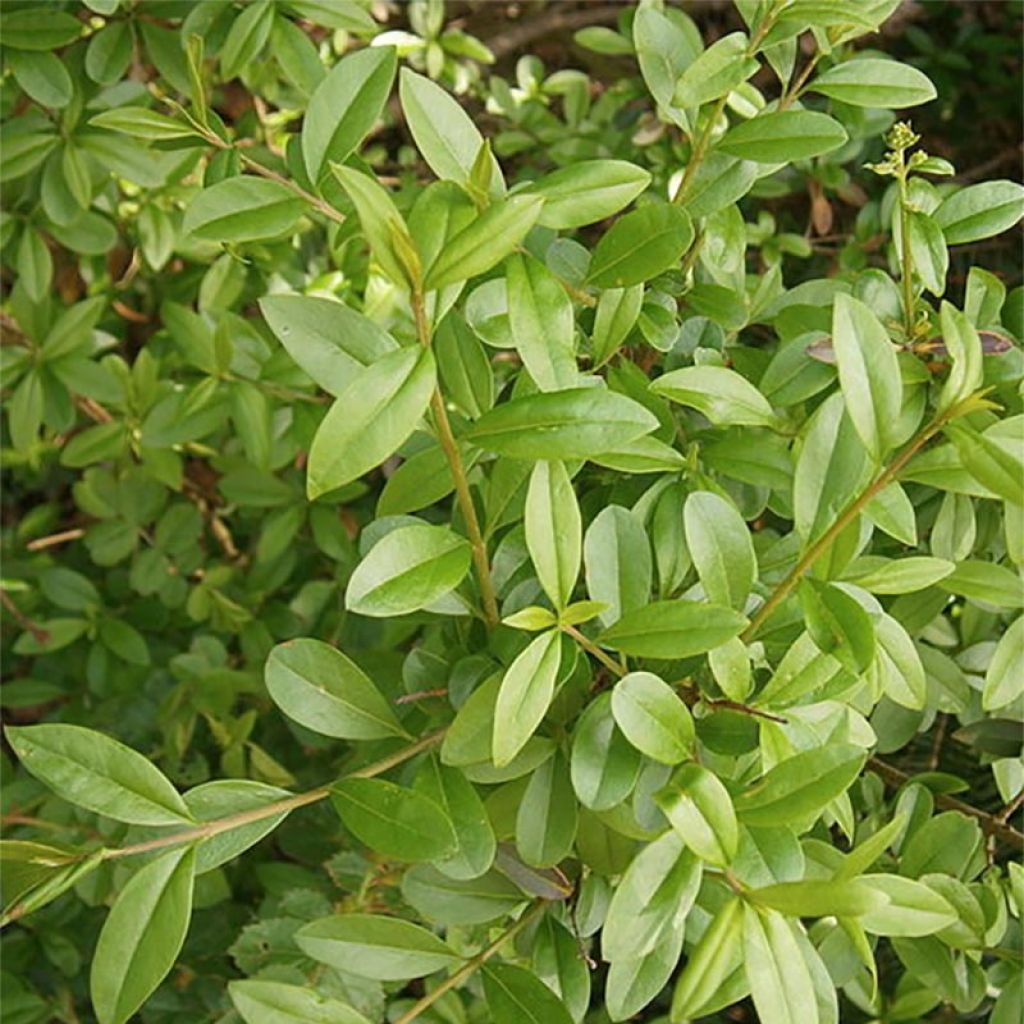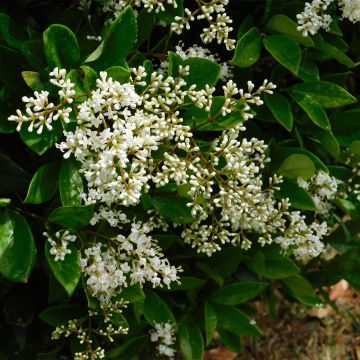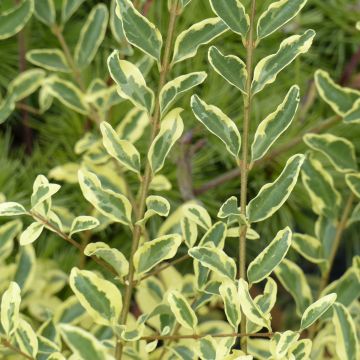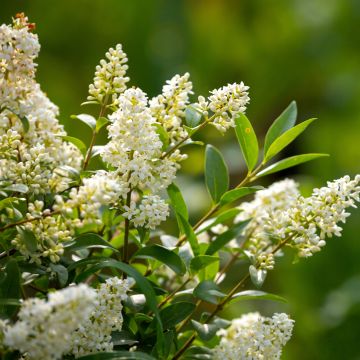

Common Privet - Ligustrum vulgare Atrovirens


Common Privet - Ligustrum vulgare Atrovirens
Common Privet - Ligustrum vulgare Atrovirens
Ligustrum vulgare Atrovirens
Common Privet, European Privet, Prim, Prim-cut
Beautiful quality. I highly recommend it.
Léa, 18/09/2025
Special offer!
Receive a €20 voucher for any order over €90 (excluding delivery costs, credit notes, and plastic-free options)!
1- Add your favorite plants to your cart.
2- Once you have reached €90, confirm your order (you can even choose the delivery date!).
3- As soon as your order is shipped, you will receive an email containing your voucher code, valid for 3 months (90 days).
Your voucher is unique and can only be used once, for any order with a minimum value of €20, excluding delivery costs.
Can be combined with other current offers, non-divisible and non-refundable.
Home or relay delivery (depending on size and destination)
Schedule delivery date,
and select date in basket
This plant carries a 24 months recovery warranty
More information
We guarantee the quality of our plants for a full growing cycle, and will replace at our expense any plant that fails to recover under normal climatic and planting conditions.
Would this plant suit my garden?
Set up your Plantfit profile →
Description
The Ligustrum vulgare Atrovirens is a choice of common privet that offers added interest for its foliage that persists longer in winter. Easy and fast to grow in any soil, and perfectly tolerant of pruning, it is particularly appreciated for creating hedges. Depending on your budget, the length of your hedge, your patience, and the time you can dedicate to gardening, there is a range of products available to choose from.
- For an economical Atrovirens hedge, opt for 9 cm pots that you can plant all year round, or choose bare-root plants for autumn or winter planting. Soil preparation should be meticulous (careful weeding, removal of all roots, create planting trench) and until they establish themselves it is advisable to place a mulch at the base of the shrubs to limit the germination of adventive plants and the need for weeding. Once established, they grow quickly and will soon catch up with their cultivated counterparts in pots. This is the most economical solution when it comes to creating a hedge of at least 10 m (32.8 ft) in length.
- For a fast-growing Atrovirens hedge, or to fill in an existing hedge, choose bushes in 2-3 litre, or even 10 and 12 litre pots. Potted bushes can be planted throughout the year, except during freezing or extremely hot periods. They should be planted in individual planting holes, like all other shrubs in the garden. While they have an immediate effect, they take a little longer to "start" and will require more frequent and regular watering, especially when the summer is dry.
Respect the proper planting distance depending on the size of your plant! It is recommended to leave a space of 60 cm (23.6 in) between each plant for plants in pots and bare roots, 70 cm (27.5 in) to 80 cm (31.5 in) for plants in 2 or 3 litre pots, 80 cm (31.5 in) to 1 m (3.3 ft) for pots from 4 to 10 litres, and 1 m (3.3 ft) to 1.2 m (3.9 ft) for pots larger than 10 litres.
Regarding the height of your hedge: except for specific requirements in a housing estate or condominium, the Civil Code applies: if trees and shrubs are taller than 2 m (6.6 ft), they must be planted at a minimum distance of 2 m (6.6 ft) from the property boundary. If the height is less than 2 m (6.6 ft), a minimum distance of 50 cm (19.7 in) is required. The planting distance is measured from the boundary to the centre of the tree. The height is measured from the ground to the tip of the plant.
The Ligustrum vulgare Atrovirens, vigorous, dense and compact, also offers fragrant cream-white summer blooms followed by black berries in autumn. This shrub is appreciated by both gardeners and birds, which gladly nest in it. This very accommodating privet tolerates all exposures, temporarily waterlogged soils, sea spray, and repeated pruning. When not pruned, 'Atrovirens' offers summer flowers composed of fragrant white-cream panicles, followed by black berries in autumn.
Originally from temperate zones in Europe, Asia and North Africa, the common privet is perfectly at ease in most regions. Resistant to cold, it shows a preference for calcareous, fertile, and fresh soils, but it is very adaptable. It belongs, like lilac and olive, to the Oleaceae family. The cultivar 'Atrovirens', selected in Denmark in the 1970s, stands out with its elongated and narrower leaves, which are more resistant to severe frost.
Its habit is bushy and branching, its upright stems are very vigorous, and its growth is fast. The common Atrovirens privet can easily reach a height of 2 to 3 m with a width of 1.50 to 2 m (4.9 to 6.6 ft). Its foliage, very dense, consists of narrow and ovate leaves of dark green colour, measuring between 3 and 6 cm (1.2 to 2.4 in) long. In June-July, on unpruned subjects, small tubular white-cream flowers appear, very fragrant and intensely honey-scented, in panicles of 10 to 12 cm (3.9 to 4.7 in). This is followed by small spherical berries, 3 to 5 mm (0.1 to 0.2 in) in diameter, turning black and shiny in autumn. They will persist throughout part of winter and serve as food for certain birds. The leaves, flowers, and fruits of the privet are toxic to humans if ingested.
This variety of 'Atrovirens' privet is one of the most commonly used for creating trimmed hedges and windbreaks. It is very easy to shape as desired, making it suitable for topiary and bonsai. The shrub also merits being planted in groups, clumps, or wild or countryside hedges, which will allow you to enjoy its blossoms. The Ligustrum vulgare Atrovirens can be associated with other shrubs that flower in summer (Ceanothus Gloire de Versailles, Spirea, Hibiscus, Butterfly bush) and perennial plants (Gaura Lindheimeri, Verbena, Buenos Aires Vervain, Shrubby Mallows), in a flowering hedge. When pruned into topiary shapes, it will have a beautiful effect when combined with other similarly pruned shrubs (Boxwood, Elaeagnus ebbingei, Yew), with different shapes and foliage, giving a very graphic and minimalist decor.
The roots of the privet are voracious and make it difficult to establish perennial plants at its base. Respect a sufficiently large planting distance around it.
Properties: With its highly fragrant and honey-scented flowering, this privet contributes to bee preservation. Its pollen can cause allergies in sensitive individuals. The privet has a very high resistance to pollution.
Report an error about the product description
Common Privet - Ligustrum vulgare Atrovirens in pictures


Plant habit
Flowering
Foliage
Botanical data
Ligustrum
vulgare
Atrovirens
Oleaceae
Common Privet, European Privet, Prim, Prim-cut
Cultivar or hybrid
Other Ligustrum - Privet
View all →Planting and care
Very undemanding, the Ligustrum vulgare Atrovirens is satisfied with any ordinary soil (even limestone and clay) which is not too dry, and a sunny or semi-shaded exposure. It tolerates occasionally waterlogged soils and can grow in shade, although it will be less floriferous. The privet does not appreciate excessively acidic and poor soils. Very hardy, it can withstand temperatures down to -17°C (1.4 °F) and below. It has good tolerance to sea spray and can be planted by the seaside. Avoid planting in arid conditions, in shallow soil that is dry in summer. During planting in autumn or spring, cut the plant back to 40cm (15.7 in) from the ground to achieve denser branching. In hedges, allow for spacing of 50 to 70 cm (19.7 - 27.6 in) between each plant. Due to the rapid growth of this privet, for trimmed hedges or topiaries pruning is necessary twice a year: in spring (April-May) and late summer (August-September) lightly cut back the branches to allow the bush to branch out well. It should be noted that the privet does not flower or flowers very little if it is pruned. For freely growing solitary bushes, pruning is done in spring and consists of removing dead wood to maintain a beautiful habit. Possible diseases and parasites: aphids, thrips, powdery mildew, scale insects.
Planting period
Intended location
Care
-
, onOrder confirmed
Reply from on Promesse de fleurs
Similar products
Haven't found what you were looking for?
Hardiness is the lowest winter temperature a plant can endure without suffering serious damage or even dying. However, hardiness is affected by location (a sheltered area, such as a patio), protection (winter cover) and soil type (hardiness is improved by well-drained soil).

Photo Sharing Terms & Conditions
In order to encourage gardeners to interact and share their experiences, Promesse de fleurs offers various media enabling content to be uploaded onto its Site - in particular via the ‘Photo sharing’ module.
The User agrees to refrain from:
- Posting any content that is illegal, prejudicial, insulting, racist, inciteful to hatred, revisionist, contrary to public decency, that infringes on privacy or on the privacy rights of third parties, in particular the publicity rights of persons and goods, intellectual property rights, or the right to privacy.
- Submitting content on behalf of a third party;
- Impersonate the identity of a third party and/or publish any personal information about a third party;
In general, the User undertakes to refrain from any unethical behaviour.
All Content (in particular text, comments, files, images, photos, videos, creative works, etc.), which may be subject to property or intellectual property rights, image or other private rights, shall remain the property of the User, subject to the limited rights granted by the terms of the licence granted by Promesse de fleurs as stated below. Users are at liberty to publish or not to publish such Content on the Site, notably via the ‘Photo Sharing’ facility, and accept that this Content shall be made public and freely accessible, notably on the Internet.
Users further acknowledge, undertake to have ,and guarantee that they hold all necessary rights and permissions to publish such material on the Site, in particular with regard to the legislation in force pertaining to any privacy, property, intellectual property, image, or contractual rights, or rights of any other nature. By publishing such Content on the Site, Users acknowledge accepting full liability as publishers of the Content within the meaning of the law, and grant Promesse de fleurs, free of charge, an inclusive, worldwide licence for the said Content for the entire duration of its publication, including all reproduction, representation, up/downloading, displaying, performing, transmission, and storage rights.
Users also grant permission for their name to be linked to the Content and accept that this link may not always be made available.
By engaging in posting material, Users consent to their Content becoming automatically accessible on the Internet, in particular on other sites and/or blogs and/or web pages of the Promesse de fleurs site, including in particular social pages and the Promesse de fleurs catalogue.
Users may secure the removal of entrusted content free of charge by issuing a simple request via our contact form.
The flowering period indicated on our website applies to countries and regions located in USDA zone 8 (France, the United Kingdom, Ireland, the Netherlands, etc.)
It will vary according to where you live:
- In zones 9 to 10 (Italy, Spain, Greece, etc.), flowering will occur about 2 to 4 weeks earlier.
- In zones 6 to 7 (Germany, Poland, Slovenia, and lower mountainous regions), flowering will be delayed by 2 to 3 weeks.
- In zone 5 (Central Europe, Scandinavia), blooming will be delayed by 3 to 5 weeks.
In temperate climates, pruning of spring-flowering shrubs (forsythia, spireas, etc.) should be done just after flowering.
Pruning of summer-flowering shrubs (Indian Lilac, Perovskia, etc.) can be done in winter or spring.
In cold regions as well as with frost-sensitive plants, avoid pruning too early when severe frosts may still occur.
The planting period indicated on our website applies to countries and regions located in USDA zone 8 (France, United Kingdom, Ireland, Netherlands).
It will vary according to where you live:
- In Mediterranean zones (Marseille, Madrid, Milan, etc.), autumn and winter are the best planting periods.
- In continental zones (Strasbourg, Munich, Vienna, etc.), delay planting by 2 to 3 weeks in spring and bring it forward by 2 to 4 weeks in autumn.
- In mountainous regions (the Alps, Pyrenees, Carpathians, etc.), it is best to plant in late spring (May-June) or late summer (August-September).
The harvesting period indicated on our website applies to countries and regions in USDA zone 8 (France, England, Ireland, the Netherlands).
In colder areas (Scandinavia, Poland, Austria...) fruit and vegetable harvests are likely to be delayed by 3-4 weeks.
In warmer areas (Italy, Spain, Greece, etc.), harvesting will probably take place earlier, depending on weather conditions.
The sowing periods indicated on our website apply to countries and regions within USDA Zone 8 (France, UK, Ireland, Netherlands).
In colder areas (Scandinavia, Poland, Austria...), delay any outdoor sowing by 3-4 weeks, or sow under glass.
In warmer climes (Italy, Spain, Greece, etc.), bring outdoor sowing forward by a few weeks.


















































